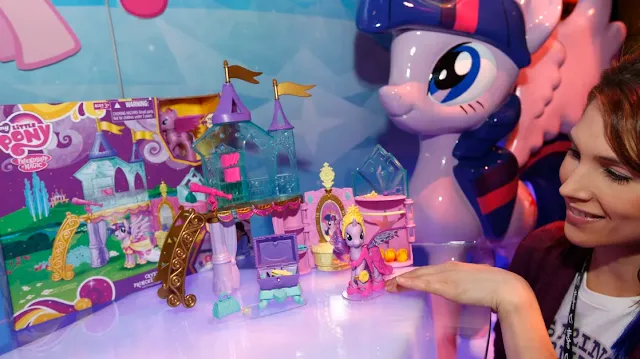Hasbro Stock Rises as CEO Addresses Manageable but Unwelcome Trump Tariffs
 |
| Strong Earnings and Cost-Cutting Initiatives Drive Market Confidence |
Shares of Hasbro Inc. surged 11% following the company's impressive fourth-quarter earnings report, which exceeded profit expectations and offered a positive outlook for the future. CEO Chris Cocks highlighted the company’s aggressive cost-cutting measures, aiming to reduce expenses by $1 billion by 2027, up from a previous target of $750 million. This strategic move has garnered praise from investors, reflecting confidence in Hasbro's ability to navigate the challenging toy market landscape.
Cocks emphasized that the toy industry appears to have reached a turning point after experiencing declines in recent years. "The toy category has been down, with low single-digit percentage drops annually over the past three years. However, we anticipate that this trend will stabilize, with sales remaining flat for the next two to three years. Hasbro is well-positioned to benefit from this stabilization, as we have a robust innovation portfolio lined up," he stated in an interview.
In its fourth-quarter earnings report, Hasbro reported a 14.5% decline in net sales year over year, totaling $1.1 billion, yet surpassed analysts' expectations of $1.02 billion. Adjusted operating profits skyrocketed by an astounding 1,390% year over year, reaching $164.8 million, compared to estimates of $149.3 million. The adjusted earnings per share (EPS) also saw a significant increase of 21% year over year, hitting $0.46, surpassing the expected $0.34.
Looking ahead to 2025, Hasbro anticipates slight year-over-year revenue growth. The company projects an adjusted operating margin of 21% to 22%, compared to last year's 20.3%. Its new guidance extends through 2027, forecasting mid-single-digit percentage annual revenue growth and annual improvements in adjusted operating margins of 50 to 100 basis points. These projections, along with the revised cost-saving goals, indicate a focused effort to enhance profitability amidst market challenges.
Despite the overall positive performance of toy stocks in early 2025, the looming threat of tariffs remains a significant concern for Hasbro and its peers. President Trump has signaled intentions to implement reciprocal tariffs, pending an April report from Commerce Secretary Howard Lutnick. The proposal includes increasing U.S. tariffs on foreign goods to match those imposed by other countries on American products.
Currently, the U.S. has enacted a 10% tariff on Chinese imports, with a 25% tariff on goods from Canada and Mexico on hold. This situation poses a potential threat to consumer companies, especially since a substantial portion of their products is sourced from China, known for its low manufacturing costs. Analysts estimate that Trump's tariffs could decrease American consumers' spending power by $46 billion to $78 billion annually.
According to industry statistics, nearly 80% of toys sold in the U.S. are produced in China. In light of this, Hasbro's Cocks mentioned that the company is prepared to adjust pricing strategies to mitigate the impact of tariffs. "The outcome of the upcoming holiday season in 2025 will heavily depend on how the tariff situation evolves. Our current guidance accounts for the existing 10% tariffs on Chinese imports, and pricing adjustments will be a crucial variable for us. However, we intend to approach this strategically," he explained.
In response to tariff challenges, both Hasbro and its competitor Mattel have been proactive in their planning. Mattel's CFO, Anthony DiSilvestro, noted that the company’s guidance for 2025 considers the anticipated effects of new tariffs and outlines strategies to leverage supply chain strengths and potential pricing adjustments.
Hasbro manufactures products like Magic: The Gathering cards in North Carolina and Texas, while its board games are produced in Massachusetts. However, expanding domestic manufacturing remains complex. Cocks acknowledged, "The challenge lies in manufacturing many toy types, such as action figures, which require manual labor and frequent design changes. To bring more toy production back to the U.S., we would need significant automation investments, which would be a substantial undertaking requiring several years."
Overall, while Hasbro's stock performance and future outlook reflect resilience, the potential impact of tariffs continues to loom large in the toy industry's landscape. The company's ability to adapt and innovate in response to these economic challenges will be critical in shaping its financial trajectory in the coming years.



댓글
댓글 쓰기